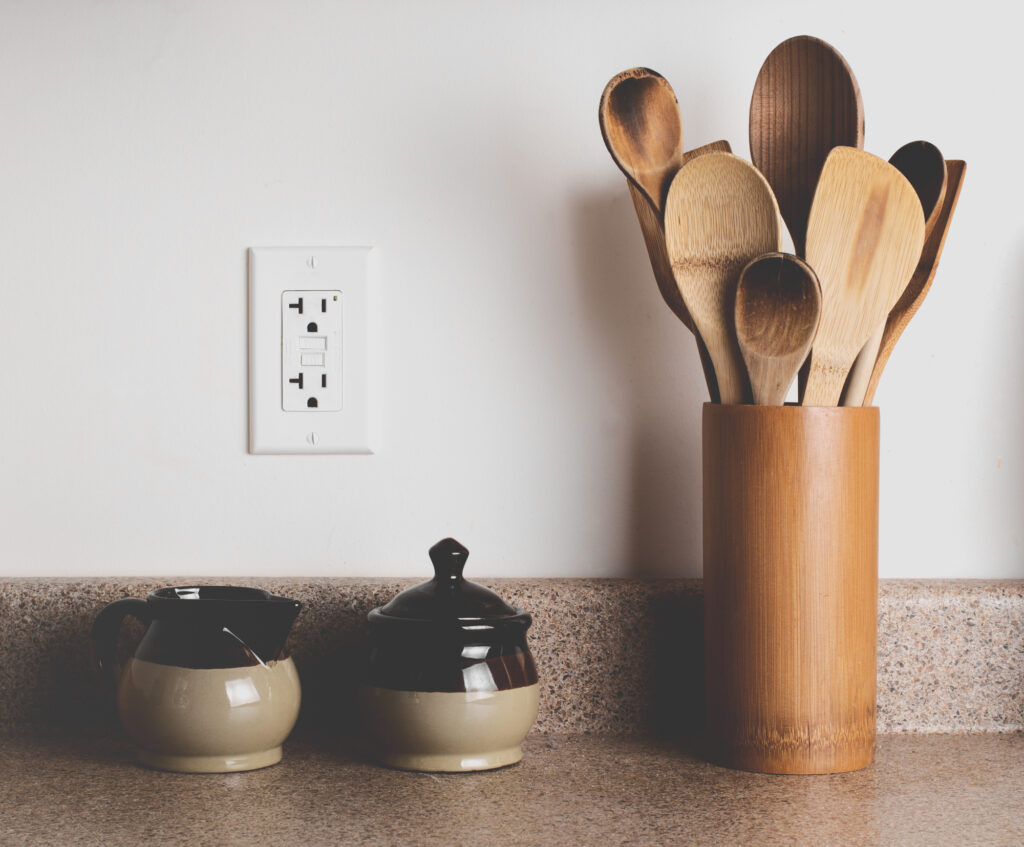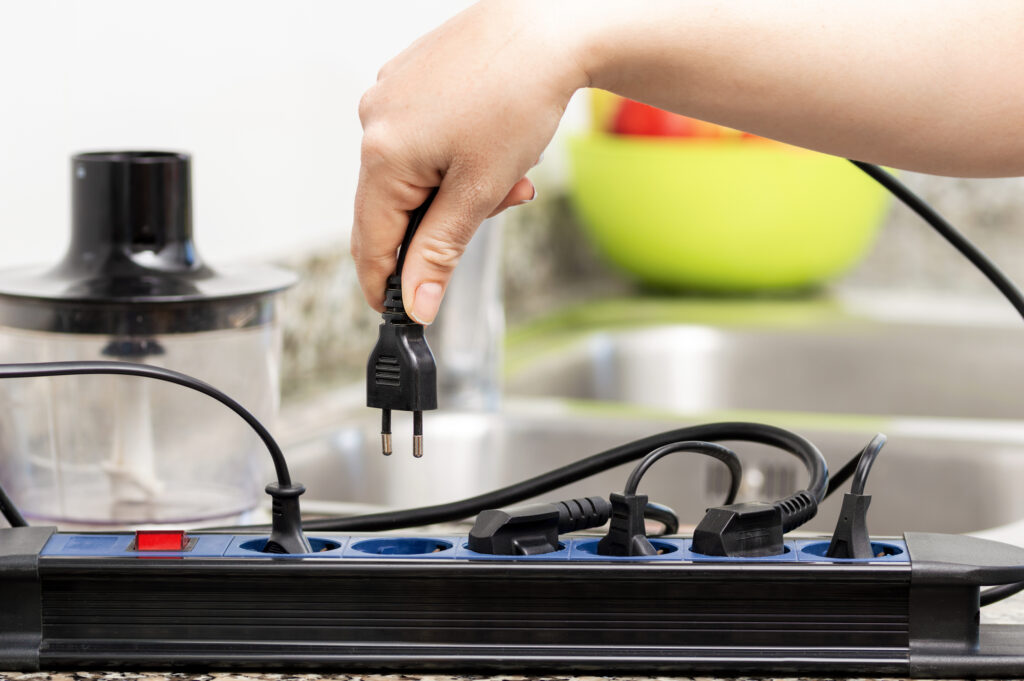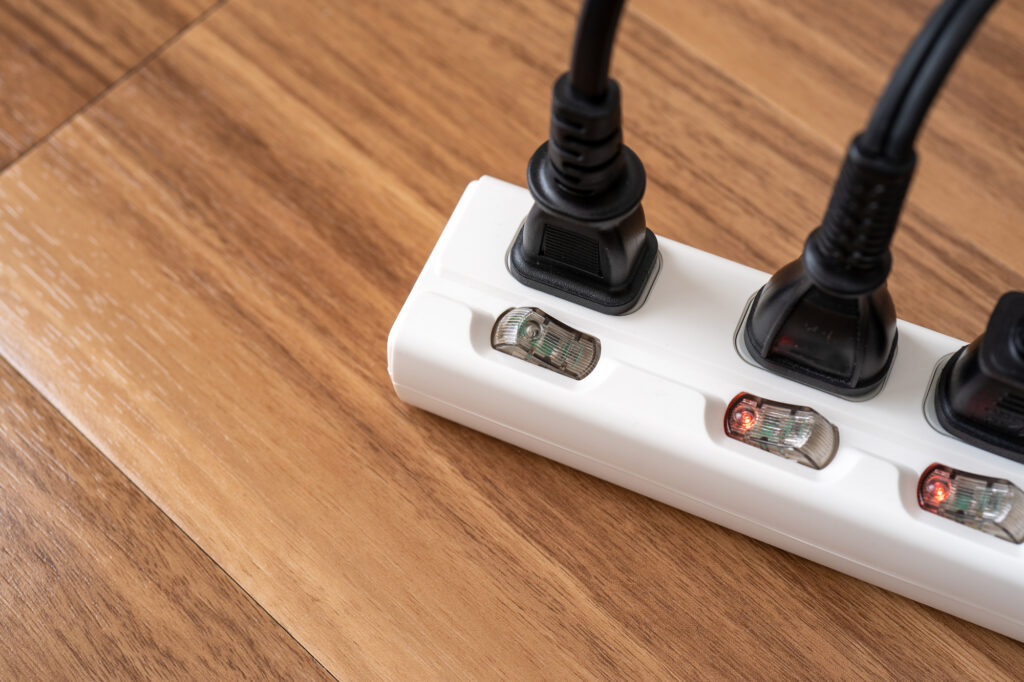
What are Power Strips?
Power strips are a technology that allows multiple electrical devices to be connected to a single electrical outlet. They typically have a long power cord and add an outlet or two to the single wall outlet you might currently find yourself with.
Power strips come in several forms:
- Basic: These typically include multiple outlets for plugging in electronic devices. They may or may not include surge protection or on/off switches.
- Surge-Protected: This is practically a basic power strip with the added feature of surge protection, which we will discuss a little later in the article.
- Smart: Smart power strips include advanced features such as energy monitoring, scheduling, and remote control via a smartphone. These power strips can help you to save energy and control your devices more easily.
- Travel: These power strips are designed to be lightweight and portable, making them ideal for use while travelling. They typically include a compact design and may include features such as USB charging ports.
Table of Contents
Benefits of Using Power Strips in the Kitchen
Increased Number of Available Outlets
The kitchen countertops often have a limited number of wall outlets and many small appliances. A power strip here and there can help with powering all your appliances while providing some surge protection.
Surge Protection for Kitchen Appliances
What is a surge protector? A surge protector feature will protect your appliance from spikes or surges coming from the outlet. These spikes can come from lightning strikes, power outages, and large appliances kicking on or off.
Improved Organization and Convenience
Power strips allow for the kitchen setup you desire. With the additional outlets, you can plug in multiple appliances without having to switch back and forth.
Having multiple power strips in your kitchen is convenient and they can double as extension cords, working around a cabinet or wall, while providing more places to plug in. This allows you to situate your kitchen countertops to fit your dream house.
Factors to Consider When Selecting a Power Strip
Number of Outlets
Consider how many appliances you want to plug in, and get a power strip that has at least that many plugs. Never plug one power strip into another. This is a fire hazard.

Cord Length
Deciding how long you want your cord can be a little trick. Too short is just obnoxious, but cords that are too long are overwhelming and hard to contain. Try measuring how far you would like the plugs to reach, and make that your minimum distance to acquire. A power strip should be helpful but cumbersome.
Surge Protection and EMI/RFI Noise Filtering
Surge protection and EMI/RFI noise filtering are two distinct but related technologies, both of which you may want to consider before purchasing a power strip.
As stated before, a surge protector is designed to protect any electronic devices you have plugged in from power surges or spikes. They divert excess voltage into the ground, helping to prevent damage to your appliances.
EMI/RFI noise filtering is a technology designed to reduce or eliminate electromagnetic interference (EMI) and radio frequency interference (RFI). This noise can interfere with the normal flow of electricity and cause problems with electronics.
Overload Protection
A certain kind of power strip will include overload protection, which is intended for shutting off power to your appliances once the electrical load meets or exceeds a certain threshold to prevent damage.
This can happen when too many things are drawing power from the same source or when a single device is drawing too much energy.
USB Charging Ports
Depending on where your power strip will be located, you might consider the addition of USB charging ports. This feature will allow you to plug in multiple devices that are not necessarily appliances, such as your phone or computer.
If you’re looking for something for your kitchen countertops, this might be an outlet to think about.
Things You Should Never Plug Into Power Strips
Large Appliances
Never plug large appliances, such as refrigerators or washing machines, into a power strip. These appliances can easily overload the circuit and should be plugged directly into a wall outlet.
Small Kitchen Appliances
There are certain appliances that are probably sitting on your kitchen countertops right now that should not be plugged into a power strip. For example, you should not plug toaster ovens, hot plates, and any kind of coffee maker into your power strip.
These are high-wattage devices that can exceed the capabilities of a power strip. Not even surge protectors cannot save you from everything.
Other Electronics
Hair dryers and flat irons should not be plugged into your power strip. In fact, any hairdressing tool using heat should be plugged directly into the wall to prevent the circuit breaker from tripping.
Among others, do not plug power tools or medical equipment into a power strip.
Get Expert Advice
When it comes down to it, finding a power strip that is a good balance of efficiency, safety, and price can be somewhat tricky. It can be as simple as finding your local hardware store to contact. Using sites such as Yelp can help expedite the process and save you lots of hassle.

